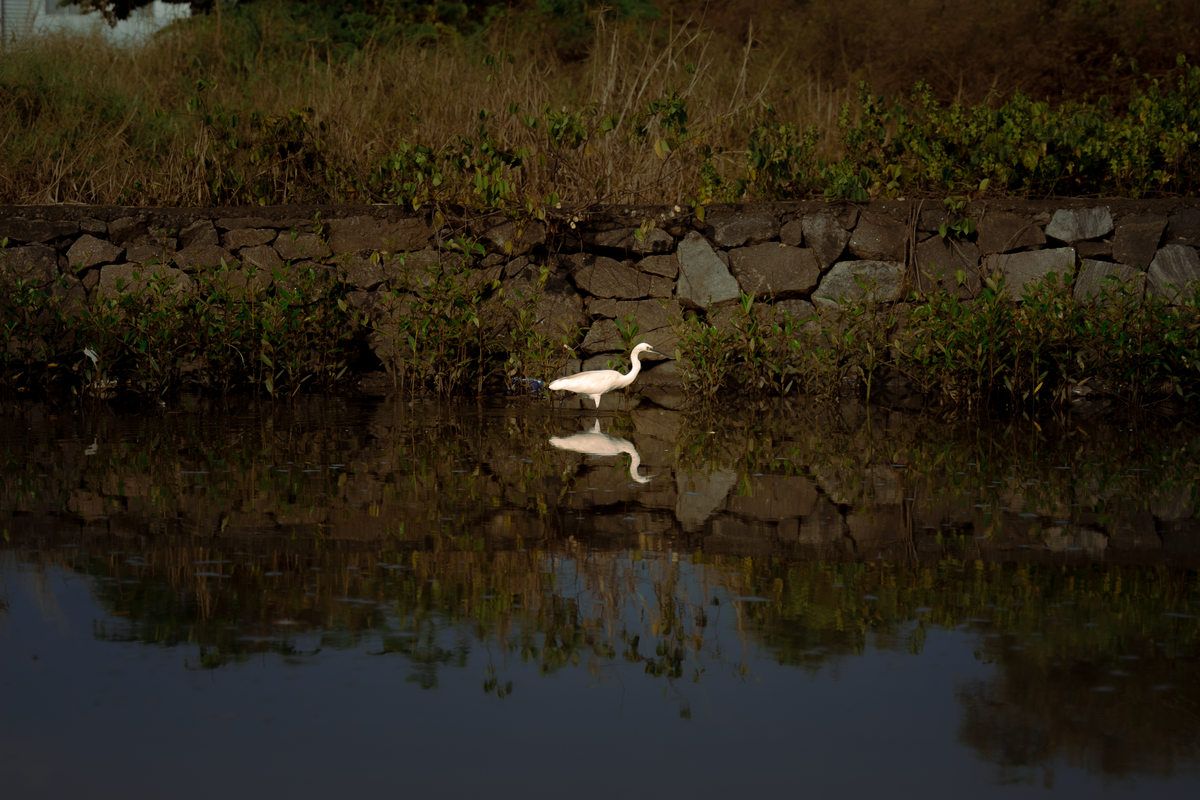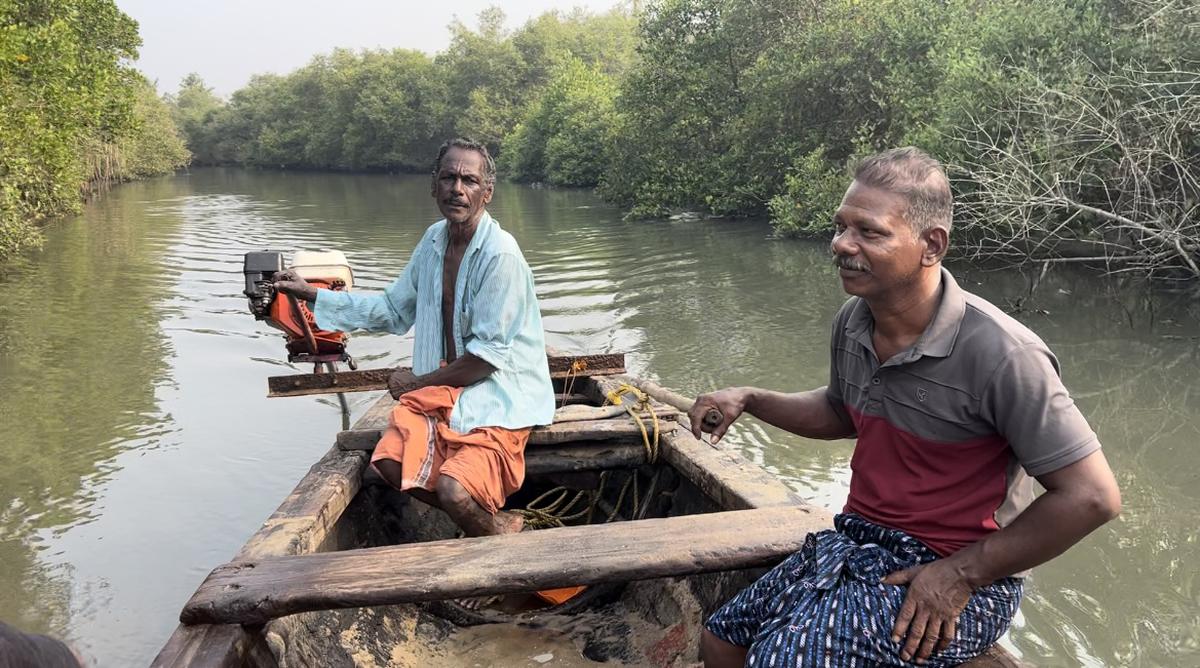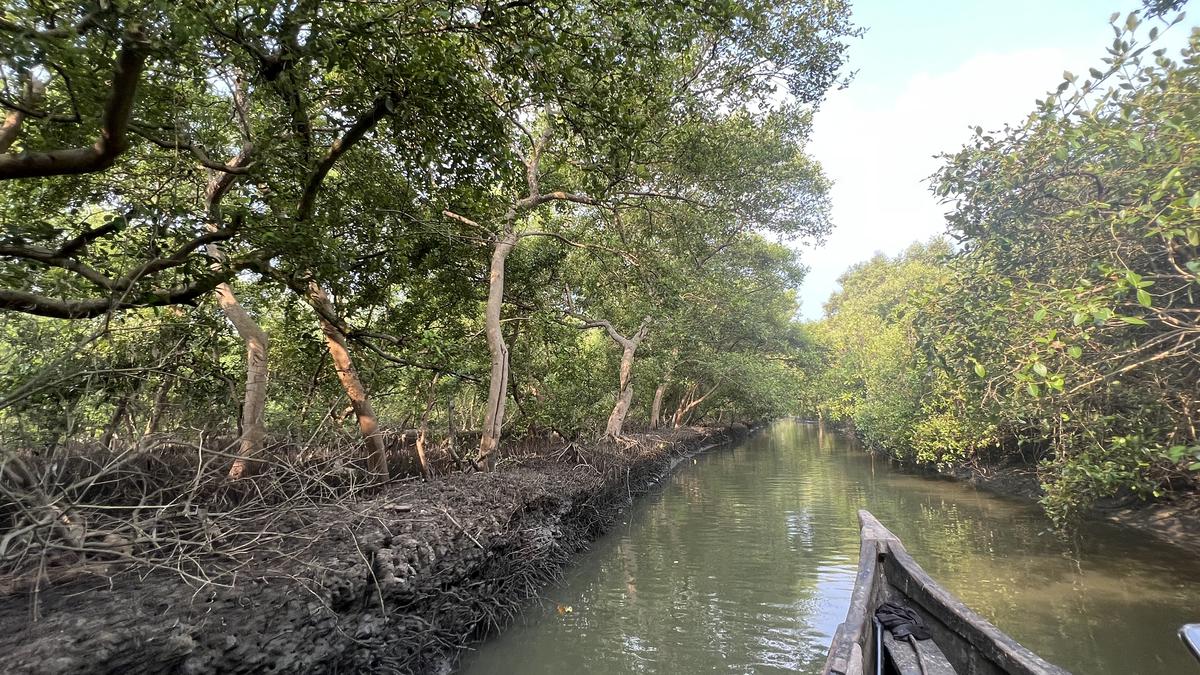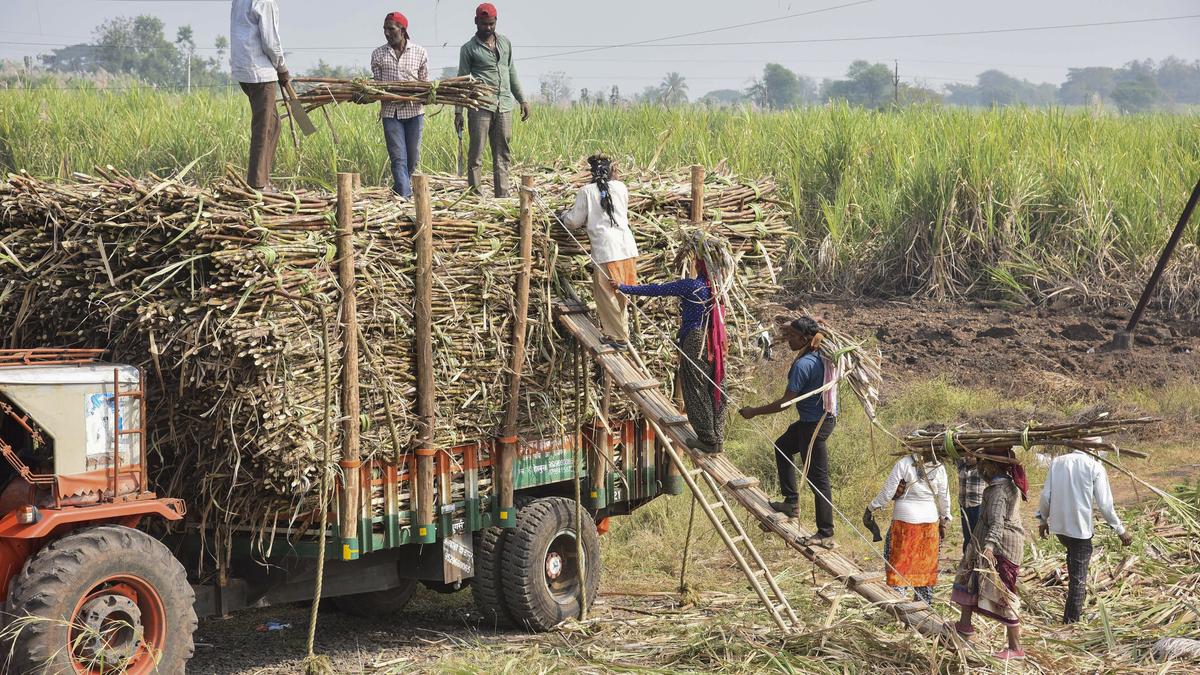Sunshine filters through a canopy of aerial roots, branches, and the blue sky, as our canoe courses leisurely through narrow, green waterways. A palpable silence arches over the four square kilometres of swampy forest. “Mangroves are among the most productive marine ecosystems on earth and provide a unique habitat for many species,” says naturalist Gishnu Mohan, leading the mangrove trail at Malippuram in Vypeen.
Conceptualised by not-for-profit Resilient Destinations Foundation, India (RDF) and operated by The Blue Yonder the trail aims to convert mangrove preservation activities into economic resilience building activities.
“We work with communities impacted by tidal flooding and develop climate resilience. These are then tweaked into consumable products. This is our latest venture,” says Gopinath Parayil of RDF. The trail was launched in January 2023.
Mangrove forest in Vypeen is spread over 4 sq km
| Photo Credit:
Purna Venugopalan
Unique habitat
On the boat is also Murugesan, a skilled fisherman and mason from Malippuram, who has made planting and tending mangroves his life mission. Every time the tide rises, his courtyard is flooded with water.
He has so far planted over a lakh of saplings and distributed as many mangrove tree seeds, a feat that made him one of the portraits featured in the documentary From The Brink, about the people affected by climate change and ensuing disasters in coastal Ernakulam. The documentary was screened recently at the mega art event, Kochi Muziris Biennale.
“There’s a science behind mangroves and Murugesan knows that,” says Sreeja KG, research director with EQUINOCT, which provides solutions to climate change challenges, and CEO of RDF. She adds, “We use his knowledge and learning to mitigate the effects of tidal flooding.”
Called Sunny day flooding or nuisance flooding, tidal flooding is chronic but it has not been declared in the state list of disasters by the government. Explaining how climate change has altered its pattern, Sreeja says, “The sea now enters the courtyards or homes and refuses to leave… Issues have so far remained unaddressed but there’s a change after the 2018 Kerala Floods.”

An egret in the swampy mangrove
| Photo Credit:
Purna Venugopalan
As the boat meanders, the dense mangrove forests turn as magical as Tolkien’s world. Roots grow upwards and rise as sharp spikes from the ground. Curvaceous branches circle and loop around trees. Under the soil is a web inhabited by crustaceans, molluscs and fishes.
A canoe with two fishermen with a small haul of Pearl Spot and Tilapia pass by. While Murugesan exchanges pleasantries with them, we are offered glasses of sweetened black tea.
Super forest
Explaining that not all coastal stretches in Kerala have mangroves, Marine biologist Pranav P says “Ernakulam has the second largest mangrove forest, about 32 square kilometres. Most of these are in Vypeen. There are pockets in Mundamveli, Maradu and near Kundanoor Bridge.” The largest mangroves are in Kannur, he adds.
According to him, there are almost 16 species of mangrove trees in the forest, which breed fish, crabs, and molluscs, from predators. “It prevents soil erosion. In the 2004 Tsunami, the Andaman coast remained protected because of the mangroves,”he says.
Sreeja says that these are “super forests” because they sequester 34 % more carbon than a regular forest. She points out that this year’s Union Budget has allocated a sizable sum for the restoration of mangroves. Closer home the District Level Nava Kerala Mission has taken up the five panchayats of the Vypeen Block under the project to create a green coastal belt.

Sugunan operating the boat with T P Murugesan
“This project highlights the need to restore our mangroves and increase forest cover, it has given us much pride,” says Sreeja. As a mangrove campaign and advocacy group they have distributed 10000 tidal flood calendars to households in 20 panchayats to observe and note tidal data.
We glide past, looking for otters. The forest is busy with fiddler crabs scuttling into the slush, oysters clinging to mossy roots and tree lizards sunning themselves. A cormorant dives into the water and an egret on a looped branch flits away. As we disembark in the rustic village, we quickly take out the cameras to click a blue kingfisher perched on a green mangrove tree.
( The mangrove trail comes at ₹ 3000 per person and takes two hours. Call 9567675653 for more details.)







